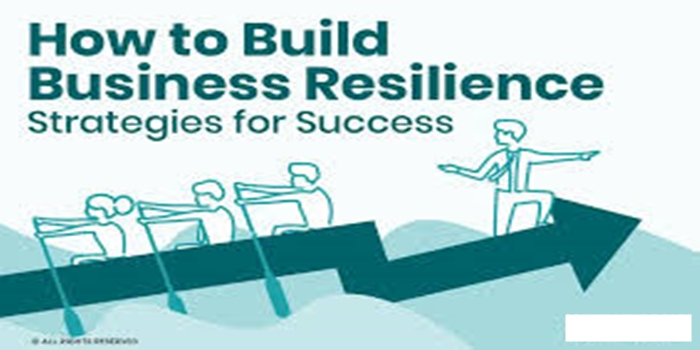In this article, we explained the meaning of building business development resilience, the features, we also talked about the benefits.
Definition
Building business development resilience means establishment a company’s ability to withstand and recover from unexpected disruptions or challenges in the business development process. It’s about fostering adaptability, flexibility, and a proactive approach to navigate uncertainty and ensure continued success.
The Features of Building Business Development Resilience:
Risk Management and Preparedness:
Proactive Risk Assessment:
Identify potential threats to your business, including supply chain issues, economic downturns, and cyber security risks.
Business Continuity Plans:
Develop strategies to minimize disruption in case of unforeseen circumstances, including data backup, disaster recovery, and incident response plans.
Revenue Protection and Prediction:
Implement robust budgeting, forecasting, and financial planning to ensure financial stability.
Adaptability and Flexibility:
Agile Operations:
Adopt a flexible and agile approach to operations, enabling you to quickly adjust to changing market conditions.
Diverse and Adaptable Workforce:
Build a team with diverse skills and the ability to adapt to new situations.
Continuous Improvement:
Implement a culture of continuous learning and improvement, constantly evaluating your processes and seeking ways to optimize them.
Culture and Mindset:
Embrace Change:
View change as an opportunity for growth and innovation, rather than a threat.
Growth Mindset:
Encourage a mindset of continuous learning and improvement, where individuals are open to new ideas and approaches.
Psychological Safety:
Create a workplace where employees feel comfortable sharing ideas and taking risks.
Strategic Communication and Relationships:
Strategic Communication: Develop a clear and consistent communication strategy to keep stakeholders informed and engaged.
Strong Relationships: Build strong relationships with key partners, suppliers, and customers.
Technological Leverage:
Digital Transformation:
Embrace digital technologies to improve efficiency, streamline processes, and enhance communication.
Data Analysis:
Utilize data analytics to gain insights into market trends, customer behavior, and potential risks.
- Self-Sufficiency and Empowerment:
Self-Sufficient Teams:
Empower teams to take ownership of their work and make decisions independently.
Knowledge Sharing:
Create a culture of knowledge sharing, where information is freely exchanged and learned from.
Supply Chain Management:
Diversified Supply Chain:
Avoid over-reliance on a single supplier by diversifying your supply chain.
Supply Chain Visibility:
Utilize technology to gain greater visibility into your supply chain, allowing you to track shipments, monitor inventory, and identify potential bottlenecks.
The Benefits Building Business Development Resilience:
Enhanced Adaptability:
Resilient organizations can pivot quickly and effectively when faced with market changes or disruptions, ensuring they remain competitive and relevant.
Reduced Risk:
By proactively identifying and addressing potential vulnerabilities, resilient businesses can minimize the impact of adverse events and maintain business continuity.
Improved Financial Performance:
Cost efficiency and effective resource allocation, fostered by resilience initiatives, can lead to improved financial results.
Strengthened Customer Relationships:
A customer-centric approach, a key element of resilience, fosters loyalty and trust, even during challenging times.
Increased Innovation:
Resilience encourages businesses to explore new ideas and approaches, leading to innovation and sustainable growth.
Enhanced Employee Engagement:
Employee well-being and development, crucial for resilience, lead to a more motivated and productive workforce.
Competitive Advantage:
Resilient businesses are better positioned to capitalize on opportunities and outpace competitors in dynamic markets.
Improved Crisis Management:
Resilient organizations have the agility and resources to effectively respond to crises and minimize their impact.
Sustainable Growth:
By integrating resilience into their core strategy, businesses can achieve long-term success while actively addressing global challenges.
Long-term Sustainability:
Building resilience through sustainable practices leads to a more environmentally and socially responsible business.
Conclusion
Building business development resilience is about creating a vigorous and adaptable system that can thrive in the face of change and adversity. It’s about investing in long-term sustainability and growth by anticipating challenges and being prepared to adapt.


